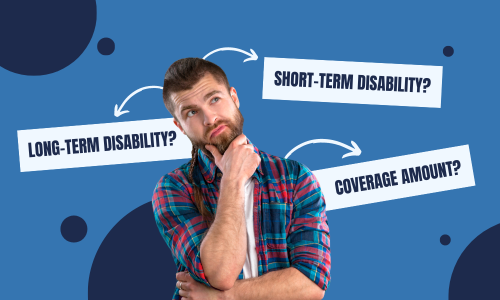Long-term disability insurance (LTD) is a critical but often misunderstood aspect of financial planning. It…

What Every CPA Needs to Know About Disability Insurance
Generally speaking, CPAs tend to be proactive when it comes to planning for their financial future and retirement. Unfortunately, one aspect of financial planning that even the most responsible of CPAs can overlook is that of purchasing long-term disability insurance. But what would you do if you were no longer able to feasibly practice accounting because you had cancer, were confined to a wheelchair, had a stroke, or were unable to see? Would you and your family be able to maintain the same quality of life financially? If you’re like most CPAs, then the answer is a resounding “no.”
Workers Comp and Social Security Probably Aren’t Enough
Even if your place of employment has workers compensation insurance and you’ve been paying into Social Security during your years of practice, there’s a good chance these won’t be enough. The majority of long-term disabilities are not work-related, and therefore not covered by workers’ compensation. And even if your disability can be attributed to the workplace, claims can be denied or significantly delayed in paying out benefits.
2.3 million people filed disability claims with Social Security in 2008. Even so, it’s estimated that unexpected injuries/illnesses are to blame for 350,000 bankruptcies each year. Disability insurance is an especially wise investment in your future and provides you with additional peace of mind as an accounting professional.
Deciding How Much Coverage You Need
One of the biggest obstacles standing in a CPA’s way of buying disability coverage is simply not knowing how much coverage is needed. However, it’s actually quite simple to calculate the amount of disability insurance you would need. Simply start by adding up your available monthly income from any employer disability coverage (if applicable) and any spouse or family members’ income. Then, subtract that amount from your total monthly expenses, such as:
- monthly living expenses (rent/mortgage, insurance, utilities, bills, etc.)
- child care expenses
- home maintenance costs
- loan/credit card payments
- savings, investment, and retirement contributions
The amount you’re left with is how much you’ll need in monthly disability benefits to supplement your needs — and you might be surprised at just how high this figure is.
What to Look for in Your Coverage
Now that you realize you need disability insurance, it’s time to start shopping for policies—but what should you look for? As you explore coverage options, you’ll want to find policies that allow you to increase your coverage as needed and that covers any remaining school debt as part of your benefits. Your disability policy should also be portable—meaning you can collect on it regardless of your employment status. You’ll also want to be aware of the tax implications of your policy. For example, will your benefits be taxed as you contribute, or as you collect on them? Finally, you’ll want to evaluate certain features of your policy such as the renewability guarantee and whether your premiums or benefits can be changed by the company over time.
Now that you have a better understanding of the basics of disability insurance, you’ll be in a better position to consider the options available to you through the FICPA sponsored CPA Insurance Marketplace. From there, you can enjoy greater peace of mind as a CPA. Protect the practice you’ve worked so hard to build; begin shopping for your disability insurance policy today.


